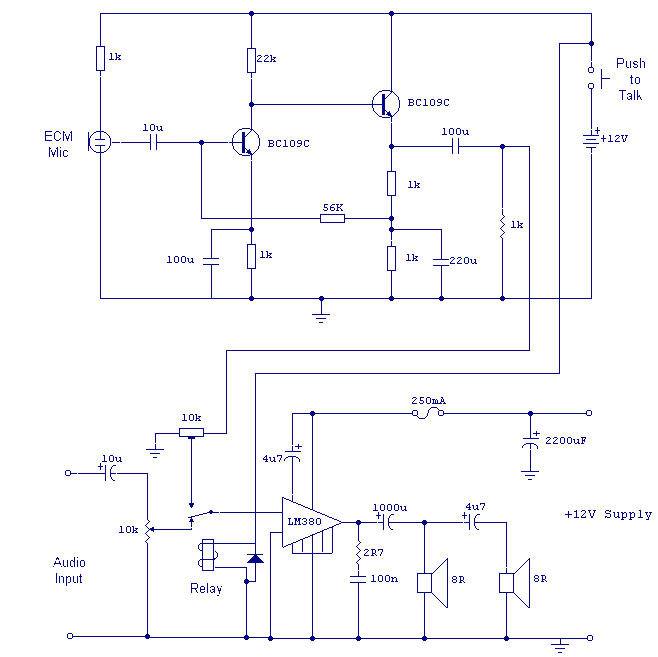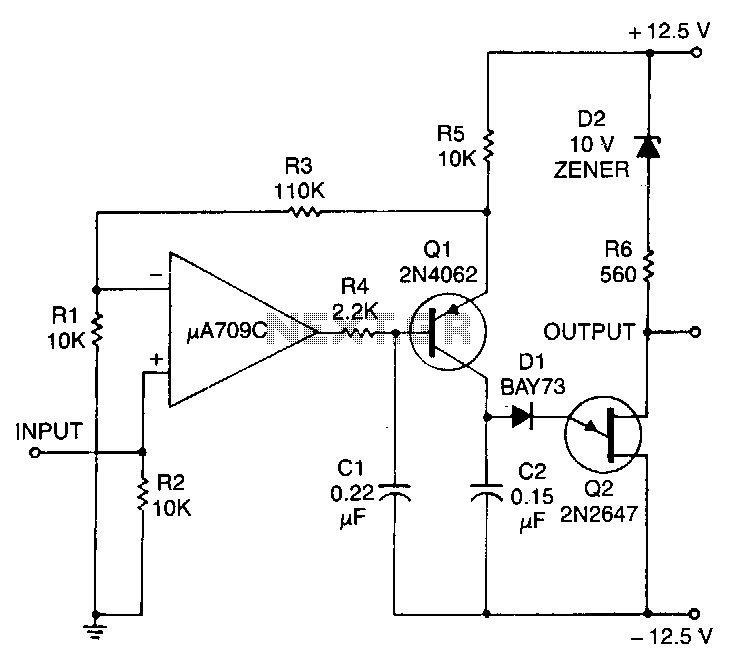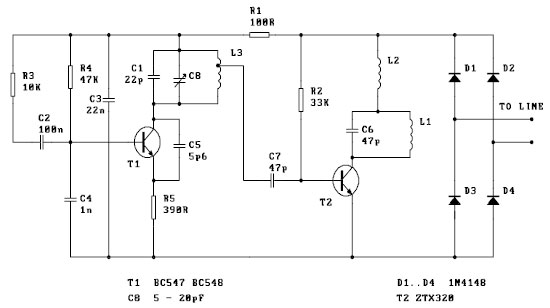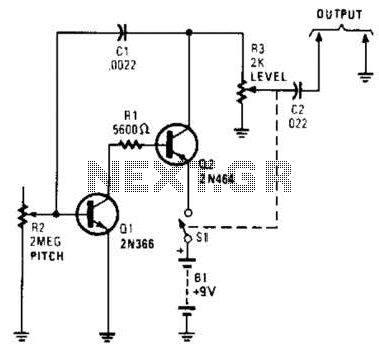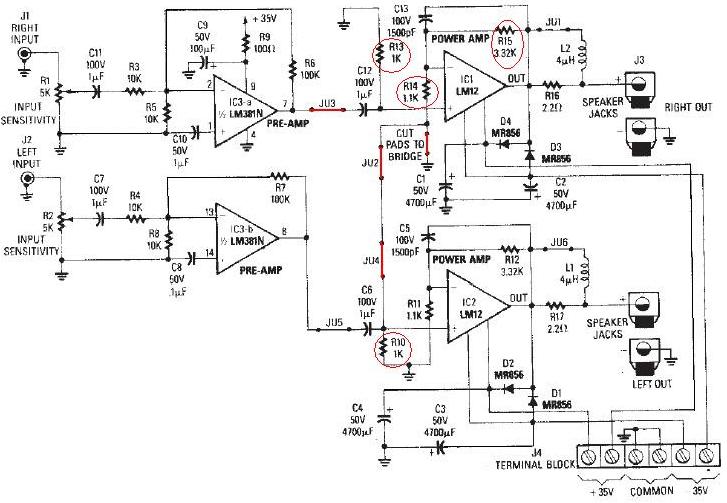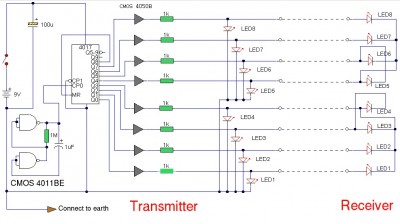
Adjustable output voltage regulator circuit diagram
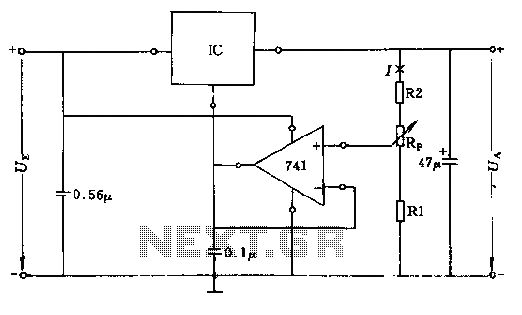
The circuit consists of resistors R1, R2, and RP, where the resistance values play a critical role in determining the magnitude of the current I. This current must exceed the input current of the operational amplifier, which is approximately I = 1mA. The current is influenced by the output voltage, particularly when set to a minimum value (UAmin). As the output voltage increases, the current I must also increase correspondingly. The value of resistor R1 should exceed the operating range voltage of 0.5V to ensure stability in the operational amplifier's low output voltage. The minimum output voltage is defined by the sum of voltages across UR1 and UR, which is the constant voltage from the integrated voltage regulator. Conversely, the maximum output voltage is determined by the equation UeX = -Us + UR2. For instance, if Us is 1.5V and UR2 is 1V, then the maximum output voltage Umax FUe is calculated to be -2.5V.
The described circuit utilizes resistors R1, R2, and RP to regulate current flow, ensuring that the operational amplifier operates within its specified parameters. The current I, which is crucial for the amplifier's performance, must exceed 1mA to maintain functionality. The output voltage plays a significant role in this relationship; as the output voltage approaches its maximum, the necessary current I must also increase to match this requirement.
Resistor R1's value is particularly important, as it must be greater than 0.5V to provide stability to the operational amplifier's low output voltage. This stability is vital for the proper functioning of the circuit, especially when dealing with low voltage outputs. The minimum output voltage is influenced by the voltage across UR1 and the voltage from the integrated voltage regulator (UR). This ensures that the circuit maintains a consistent output even under varying load conditions.
The maximum output voltage is determined by the configuration of the circuit, specifically by the relationship between the supply voltage (Us) and the voltage across R2 (UR2). In the provided example, with Us set to 1.5V and UR2 at 1V, the maximum output voltage is calculated to be -2.5V. This indicates the circuit's ability to handle negative voltages, which may be necessary for certain applications.
In summary, this circuit design emphasizes the importance of resistor values and their impact on current and voltage regulation within an operational amplifier setup. Proper selection and configuration of these components are essential for achieving the desired performance and stability of the circuit.Circuit R1 R2 + RP + size branch resistance value determines the magnitude of the current I, the current should be greater than the input current of the operational amplifier, is about I = 1mA. It depends on the output voltage as low as UAmin. Therefore, when the output voltage is adjusted to the maximum value of the current I should be correspondingly larger. Resistor R1 value should be greater than the operating range of the R1 voltage 0.5V, in order to stabilize the op amp's low output voltage.
Minimum output voltage is determined by UR1 + UR, UR integrated voltage regulator constant voltage. The maximum output voltage is determined by UeX (-Us + UR2). If Us = 1.5V, UR2 = 1V, then Umax FUe = -2.5V.
The described circuit utilizes resistors R1, R2, and RP to regulate current flow, ensuring that the operational amplifier operates within its specified parameters. The current I, which is crucial for the amplifier's performance, must exceed 1mA to maintain functionality. The output voltage plays a significant role in this relationship; as the output voltage approaches its maximum, the necessary current I must also increase to match this requirement.
Resistor R1's value is particularly important, as it must be greater than 0.5V to provide stability to the operational amplifier's low output voltage. This stability is vital for the proper functioning of the circuit, especially when dealing with low voltage outputs. The minimum output voltage is influenced by the voltage across UR1 and the voltage from the integrated voltage regulator (UR). This ensures that the circuit maintains a consistent output even under varying load conditions.
The maximum output voltage is determined by the configuration of the circuit, specifically by the relationship between the supply voltage (Us) and the voltage across R2 (UR2). In the provided example, with Us set to 1.5V and UR2 at 1V, the maximum output voltage is calculated to be -2.5V. This indicates the circuit's ability to handle negative voltages, which may be necessary for certain applications.
In summary, this circuit design emphasizes the importance of resistor values and their impact on current and voltage regulation within an operational amplifier setup. Proper selection and configuration of these components are essential for achieving the desired performance and stability of the circuit.Circuit R1 R2 + RP + size branch resistance value determines the magnitude of the current I, the current should be greater than the input current of the operational amplifier, is about I = 1mA. It depends on the output voltage as low as UAmin. Therefore, when the output voltage is adjusted to the maximum value of the current I should be correspondingly larger. Resistor R1 value should be greater than the operating range of the R1 voltage 0.5V, in order to stabilize the op amp's low output voltage.
Minimum output voltage is determined by UR1 + UR, UR integrated voltage regulator constant voltage. The maximum output voltage is determined by UeX (-Us + UR2). If Us = 1.5V, UR2 = 1V, then Umax FUe = -2.5V.
